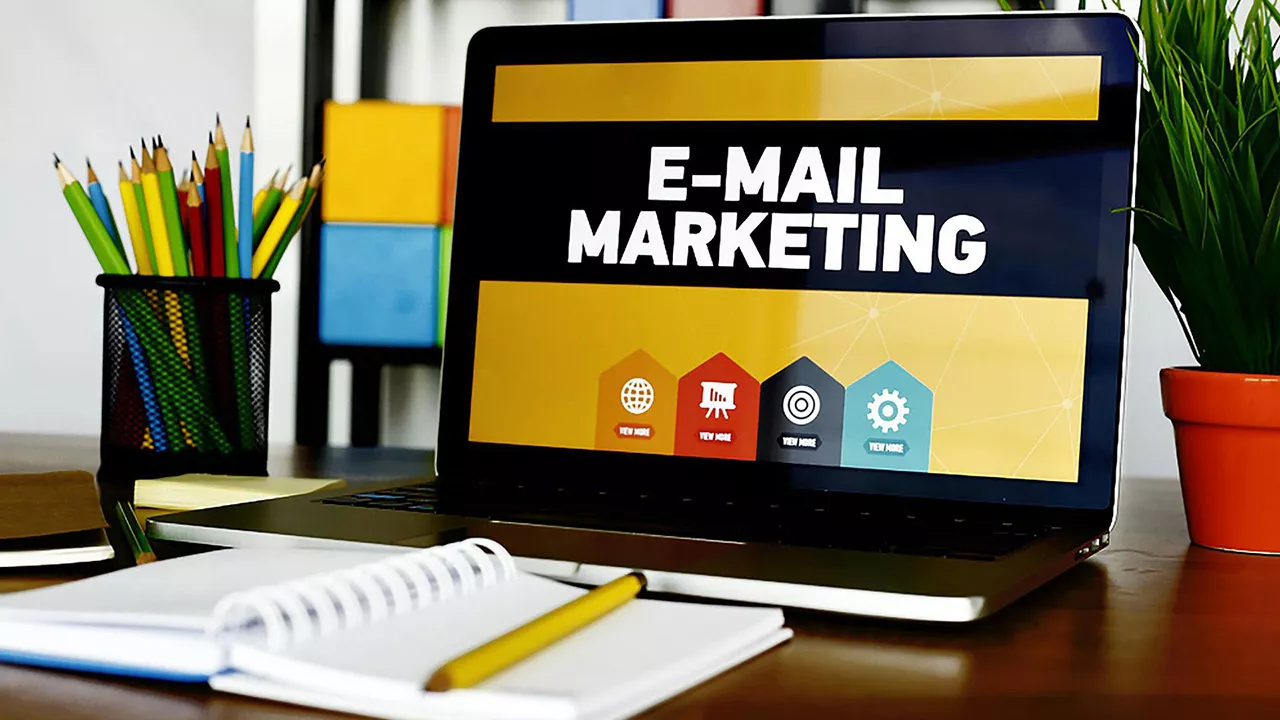
Email marketing is a hugely important part of growing your business. In fact, it’s a key way to convert more prospects into paying customers and keep your existing customers engaged with your business. While email might seem like an old-school tool in today’s social media-driven world, don’t be fooled: the majority of businesses still rely on email marketing to bring in new customers and communicate with their existing ones. Read on for our quick guide on how to get set up with email marketing and start reaching more people than ever before!
What is email marketing?
Email marketing is the practice of sending emails to customers, potential customers, and others who have opted in to receive them. It’s a great way to stay in touch with customers and get content in front of them on a regular basis.
There are many different types of email campaigns that you can run. Some examples include:
- Welcome series – This type of campaign helps introduce your new subscribers to your brand by providing helpful tips or resources right away.
- Newsletters – Newsletters are an excellent way for businesses to share news about their latest product launches or updates about their industry (e.g., “3 Best Practices for Email Marketing.”). They’re also great for communicating with current customers once they’ve made a purchase from you (e.”g., “We care about our people! Here’s what happened at our holiday party…”).
- Promotional emails – You’ll want to use this type of email sparingly so it doesn’t get annoying for people receiving it over time but it also works well if done right! For example: If one was launching a new product line into retail stores nationwide then this would be an appropriate time — especially since many consumers tend not only buy online but also spend thousands annually online themselves too!
Why is email marketing so important?
Email marketing is a great way to build relationships with your audience. You can reach out to them when you have something new to share or just keep in touch throughout the year. It’s also one of the most effective ways for brands and businesses to communicate with their customers, prospects, partners and anyone else who might be interested in what they have to offer.
Email marketing makes it easier for people to learn about your brand and products because they don’t have to do much more than open an email (or click through on a link) if they want access to what’s being offered.
How do I start an email list?
You can start your email list in just a few minutes by signing up to a free service like Mailchimp or Campaign Monitor. You’ll need to confirm that you have the right to send emails on behalf of your company, so make sure you’ve got permission from the person who owns the email account before using it.
Once they’ve opted in, keep them engaged by sending useful tips and advice related specifically their industry or niche; even if people don’t open every single one of these messages immediately after receiving them (and most people won’t), there’s no harm done if someone decides later on down the road that he wants something specific from this particular brand!
Who should be on my email list?
When you’re building your email list, there are two main types of people who should be on it:
- Customers. If you have customers already, this group is the obvious one to start with. These are the people who already know and trust your brand, so they’re more likely to open and read your emails than anyone else.
- Prospects. Prospects are anyone who might become a customer someday—and that’s pretty much all of us! The best way to think about prospects is as everyone who hasn’t bought from you yet but could in the future (or someone who has never heard of you).
How do I know how many people to include on my email list?
You should include everyone who has ever been in contact with your business. At a minimum, this means every current and past customer, but it also includes anyone who has visited your website or signed up for an email list (even if they haven’t bought anything yet).
You should include everyone who has ever expressed an interest in your business. This includes people who have subscribed to hear about future offers or events, as well as those who have asked questions via email or social media channels. If they have given you their contact details at any point, they are fair game for adding to your list!
You should also include anyone who has bought something from you—even if it was just one item off of Amazon Marketplace. If someone makes a purchase from the company (whether directly through the website or indirectly through third-party sellers), then chances are pretty good that they would be interested in receiving offers via email about similar products and services down the line!
How do I get people to join my email list?
You can get your first email list members in a couple of ways. One is to create a landing page, which is basically just a page that contains the details about your product or service and encourages visitors to sign up for your email list. This can be done through any number of free online services (like Leadpages, OptimizePress and Unbounce), or with an easy-to-use web app like MailChimp.
Another option is to use one of these free email newsletter services: MailerLite, iContact or Constant Contact. Once you set up an account with one of them and start sending out newsletters, they’ll collect subscribers who are interested in receiving future mailings from you!
How do I send an email newsletter?
You can send an email newsletter using a program like MailChimp or Constant Contact. These programs make it easy to create and send emails. You can even use templates that have pre-made headers and footers, which makes it easy to edit content within the template.
How often should I send emails?
You want to send emails regularly. Don’t send too many emails, as that will annoy your subscribers. And don’t send too few, or they’ll forget about you and unsubscribe.
Don’t send emails too often—you don’t want to annoy people with a constant stream of messages in their inboxes! But also make sure not to wait too long between sending out newsletters, or your subscribers might forget who you are and unsubscribe from the list entirely (which is never a good thing). Do some research into what works best for your audience—if possible, check out other brands in your niche that have similar audiences/products/etc., and see how often they email their customers/followers/visitors/etc..
“How much is too much email marketing”
What kind of content should be in my emails?
You have a few options for what kind of content you can send to your subscribers. Here are some suggestions:
- Information about your business. This includes things like updates, offers, new products and services, promotions, etc.
- Content about your products or services. If you sell something online (or even if you don’t), this is a great way to keep people up-to-date on what’s going on in your world and how they can get involved with it. You could also offer discounts or special deals exclusively through email if it makes sense for your business model or budget constraints!
- Blog posts/articles related to the subject matter of your product(s) or service(s). Your subscribers will be more likely to engage with this type of post than just random links from LinkedIn or Facebook so make sure that whatever article you decide upon has enough substance behind it that readers will still find value after reading through all emails sent out during any given period of time (usually two weeks at most). That being said…
Read “The ultimate guide to creating an email newsletter”

Conclusion
If you’re just starting out with email marketing and want some tips to help you get started, we’ve got your back. There are tons of options for newsletters out there, so it’s important that you pick the one that makes sense for your business and customers. We hope this overview can help give you a better idea about what kind of newsletter might work best for your business or even how to start planning one from scratch!

comments